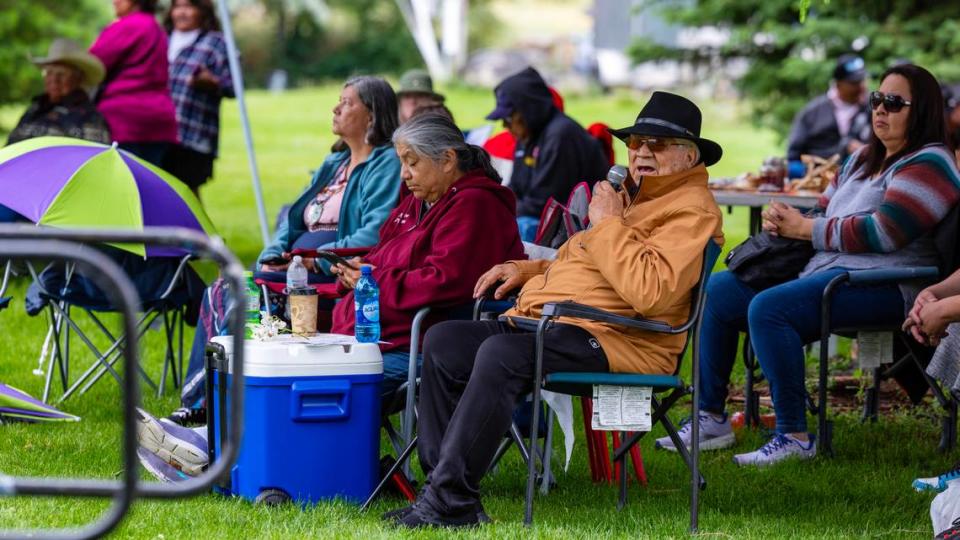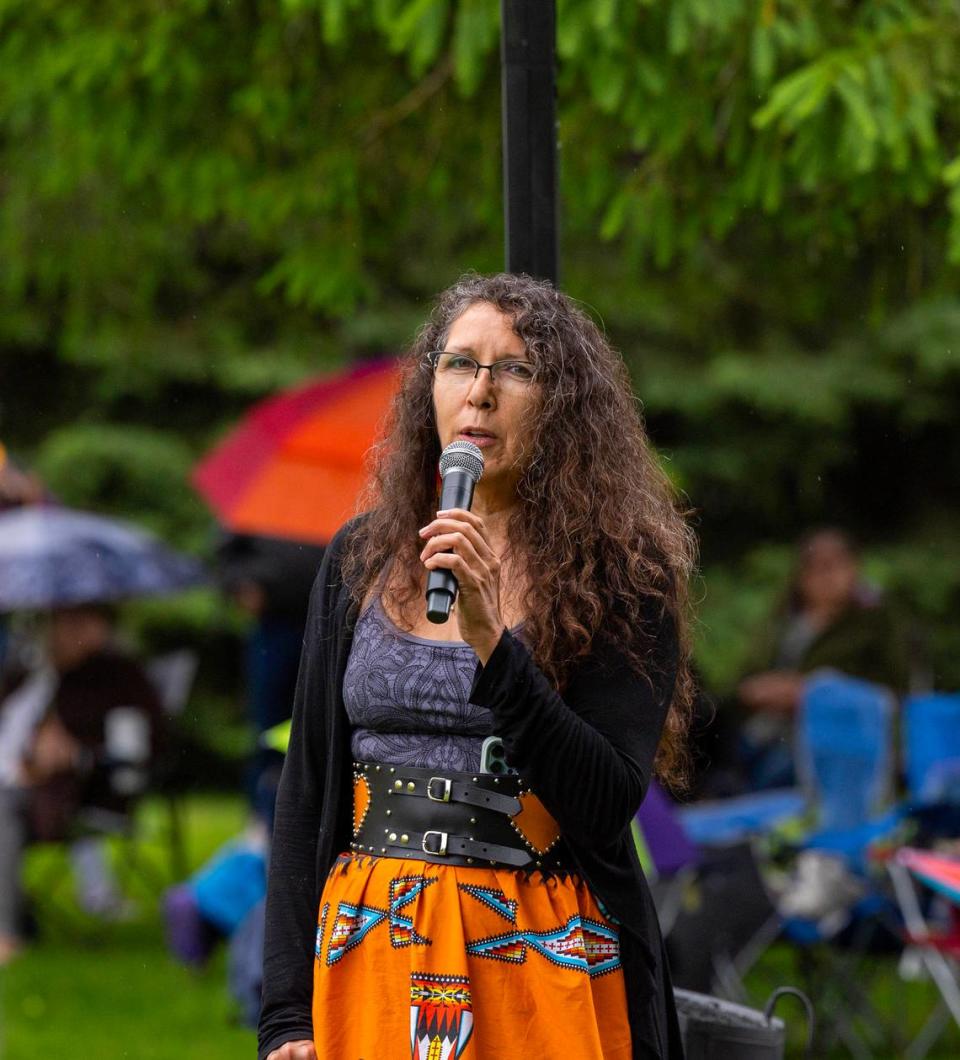‘This is our homeland’: Idaho tribes gather in Boise to commemorate ancestral lands
In an area that was once an ancestral burial ground, about 150 members of five regional American Indian tribes gathered at a park in East Boise on Friday to commemorate their ties to the Boise Valley, and to pay tribute to their culture and history.
People from the Shoshone-Bannock Tribes, Shoshone-Paiute Tribes, Burns Paiute Tribe, Fort McDermitt Paiute-Shoshone Tribe and Confederated Tribes of Warm Springs displayed their traditional clothing and told stories about their homeland.
Eagle Rock Park, the site of the gathering, was a summer campground for centuries, according to tribal members. A formal event, known as the Return of the Boise Valley People, has been held there annually since 2011.
Lionel Gross Queep, a member of the Shoshone-Bannock, told the Idaho Statesman that he has been pushing for years to include Indigenous history in the curriculum at Idaho public schools, which often do not teach about American Indians or the forced dispossession of tribal lands.
Gross Queep said that tribal youth often attend public schools off of reservations, meaning that if their history and culture are not taught, they might not learn it.
“We continue to have to battle for any rights that we have,” Gross Queep said. “We were scattered through the reservation process. That’s a fact that we have to live with. That’s a fact that you have to live with.”
When the U.S. government created reservations for tribes, different bands were forcibly moved onto different reservations, meaning there are many families today who have relatives on other reservations.
The Shoshone-Bannock reservation is in Eastern Idaho, near Blackfoot. The Shoshone-Paiute reservation is south of Boise, straddling the Idaho-Nevada state line. The Fort McDermitt Paiute-Shoshone reservation sits on the Oregon-Nevada line. The Burns Paiute reservation is in Central Oregon, and the Confederated Tribes of Warm Springs is southeast of Portland.
Shoshone, Paiute and Bannock refer to different tribes that historically inhabited the Pacific Northwest and Mountain West, according to Boise Arts and History Department Director Jennifer Stevens, who spoke at a City Council presentation on Tuesday. Stevens said the terms were created by white anthropologists to identify groups that historically inhabited different regions and spoke different dialects.
Boise was a major gathering place for the region’s original inhabitants because it sits in a borderland connecting the Great Basin, Columbia River Plateau and the Great Plains, Stevens said.
Antoinette Cavanaugh, a member of the Shoshone-Paiute Tribe, said the American Indian term for Shoshone is Neme; the term for Bannock is Banakkwa’; and the term for Paiute is Numu. She said each term means “our people.”

New land donation in Boise
This year, members of the five tribes formed a nonprofit, called the Original Boise Valley People LLC. The nonprofit was used on Friday to accept a 40-acre donation from a Boise landowner, Tom Terteling, near Bogus Basin Road.
The tribes eventually hope to build a cultural center in the Boise area, Lori Edmo, the editor of the tribal newspaper called the Sho-Ban News, told the Statesman.
“This is the area where we pray,” Edmo said. “Our people are buried all along here.”
In 1893, the Statesman reported that bones, beads and bracelets had been unearthed in the area near the Old Idaho Penitentiary. Much of the area has since been developed, and subdivisions have been built in the Boise Foothills.
Edmo added that part of the intent of the annual event is to share the tribes’ history with the general public.
“What you read in history books is not our perspective,” Edmo said. “The history books were written by white people.
“This is our homeland and we’ve never given up title to it, because the Fort Boise Treaty was never ratified.”
In the 1860s, gold was discovered in the Boise Basin, which attracted settlers to the area, said Cavanaugh, who is also a board member of the new nonprofit.
As tensions developed between the newly arrived white settlers and the American Indian inhabitants, the U.S. Army established Fort Boise, which was guarded by soldiers. In 1884, Idaho’s territorial governor signed a treaty with the Boise Shoshone ceding the tribes’ rights to the nearby lands, Cavanaugh said.

The treaty was never ratified by Congress, Cavanaugh said, meaning the lands are still “unceded territory.”
Some local native people continued to live in the area and were imprisoned at army forts, Cavanaugh said. Once tribal members were marched onto reservations far from their homelands, they were not allowed to leave.
Honoring Chief Eagle Eye
The East Boise Park was renamed in 2019 as Eagle Rock Park, and open land to the north was renamed Chief Eagle Eye Reserve in honor of the Indigenous history. Chief Eagle Eye led a band of Weiser Shoshone who lived in the area for years after most tribal members had been pushed out.
At the gathering Friday, members of the different tribes wore traditional dress, sang flag and victory songs, and displayed native plants that were historically used for cooking or hunting.
Members of the Burns-Paiute Tribe showed attendees how to make decoys for duck hunting out of tule rush, a sedge plant that grows in marshes.
Kenton Dick, the tribe’s fire chief, told the Statesman he has been coming to the annual event since it was first put together in 2011.
“It’s our land and it’s unfortunate that we lost it,” he said. “But we’re still here.”

